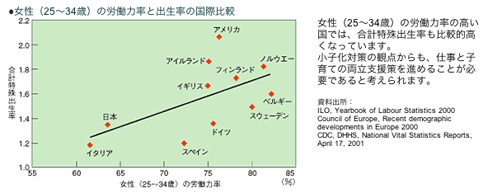Only last year, Honda’s humanoid robot, Asimo, was learning how to walk. Now, the five-year-old droid is ready to take on simple office work, greet visitors and fetch refreshments.
Japan’s third-biggest auto manufacturer introduced Tuesday a second-generation Asimo that can also push a cart weighing up to 22 pounds, and walk straight, sideways or backwards with it.
And with more joints and flexibility of movement, Asimo can also grip and carry a tray of drinks. The bubble-headed droid can also run twice as fast as a prototype unveiled last December, at 3.7 miles per hour.
Demonstrating the robot’s latest moves via video, Honda showed the 4-foot-3-inch Asimo addressing a mock visitor by name and showing her to a conference room.
“Welcome, Sato-san,” Asimo said, bowing deeply.
By pre-programming the guest’s name, meeting room and other data in an IC (integrated circuit) tag to be worn by the visitor upon arrival, an office worker can remotely send commands to Asimo, which in turn would pick them up through a built-in IC tag reader.1
Honda’s promotion of the new Asimo crystallizes the corporate view of women workers in Japan: Asimo is given a task that Japanese corporations have assigned “office ladies” (aka OLs),2 female office workers on “non-career” tracks (i.e., expected to quit when they have children), in Japan; and the female model in a promotional photograph is given a name tag “Asimo.”
If there is a 21st-century director of Ishiro Honda’s or Shunya Ito’s caliber in Japan, she may want to make a movie that satirizes corporate Japan, like this:3
Tonda invents female robots, who are programmed to type, file, and ask, “Coffee, tea, or me?” Female coffee bots displace OLs. The displaced OLs, who have nothing to lose, organize fearsome biker gangs! In the meantime, female bots begin to develop political consciousness, like Roy Batty, the leader of rebel replicants in Blade Runner. The bots and the gangs of former OLs at first hate each other and attack each other, for they are both infiltrated by agents from COINTELPRO (Coffee Intelligence Program), modeled after COINTELPRO (Counterintelligence Program) and remade in Japan by the evil Prime Minister Shunichiro Koizumi. But bots and OLs manage to overcome infiltration, under the leadership of a NEET4 woman Metoro (“me” = an abridged form of “mesu” = bitch, and “toro,” short for Torotsukiisuto, i.e. Trotskyist; “Metoro” was an actual nickname of Chizuko Ueno, a Japanese feminist, in her youthful Marxist days), and decide to unite and fight. They together recruit other NEET boys and girls, migrant workers from Asia, burakumin, zainichi [resident] Koreans, and all other outcasts, and start a social revolution against the rule of the sexist and racist corporate elite!
While such a social revolution is, alas, not on the horizon, beneath the surface of class peace in Japan there has developed formidable resistance, precisely the sort of resistance that makes Japanese capitalists dream an electric dream of a reserve army of automatons5:
Japan’s population declined this year for the first time since the country began keeping demographic records in 1899, according to preliminary figures released by the government this week.
The decrease, which specialists say signals the start of an era of shrinking population, occurred two years earlier than had been expected.6
Women of Japan, like women everywhere, have reduced their fertility rate dramatically. Japanese women’s fertility rate is “currently 1.29 lifetime births per woman,”7 among the world’s lowest. While demographic change is often explained in terms of development, urbanization, and other macroeconomic trends, the declining fertility rate in Japan is due to women’s conscious choice. Economist Naohiro Ogawa explains women’s refusal to get married and have children thus:
[O]ver the last 15 years, every 5 years, the percentage of singles increased by 10 percentage points, which is quite shocking, even for Japanese people. So why is it that Japanese women don’t want to get married? That is the question.First of all, values are changing. According to a survey I was involved in, 75% of Japanese women in their twenties support a concept called “New Singles.” This means that “I would like to enjoy the single life without worrying about marriage.” And 75% of them support this idea, but in the case of men only 50%. So in other words, even when Japanese men want to get married, Japanese women may not.
This is obviously a big change in values, and the major factor behind this change has been that more women are receiving higher education, living in urban areas, and are in paid employment. As families modernize and grow more urbanized, Japanese women will be better educated and further entrenched in the labor market. And it looks like the proportion of young women supporting this idea will increase in the years to come.
Education is a big factor. Japanese women’s educational levels are rising like crazy. In fact, if you combine four-year colleges and junior colleges, the proportion of Japanese women receiving higher education is 48% right now. And in the case of men it is lower, at 42%.
I did some econometric computations on this — computing the rate of return on education. In the case of women — suppose there are two girls. One girl stops with a high school education and starts working right away. The other girl proceeds to a four-year college. This girl will earn a 60% higher annual salary than her friend. So the rate of return is 60%, which is quite startling. But in the case of men it is only 20%, so I tell my male students that they don’t have to come to university, I want to have girls because that is more sensible from the economic point of view. [Laughter] But anyway, apart from that, I asked the question, “Why?” A lot of Americans, a lot of foreigners tend to believe that the Japanese woman’s status is very low. Which is true, depending on how you look at it. But differences in hourly wages for those below age 30 are shrinking dramatically. Back in 1950 the difference was 1 to 0.7. Now it is 1 to 0.86. It’s been steadily narrowing between men and women. Why has this happened?
The reason is that more women are getting hired. The difference in starting pay between men and women is not so great. About the same. But those women who go on to get higher wages don’t want to get married. Because they don’t want to get married, they accumulate seniority and get even higher wages. Because they get more pay they still don’t want to get married.
In other words, because they don’t want to get married, they gain seniority, and because of this they get higher wages. This leads, in turn, to substantial economic autonomy, so they have even less compunction to get married.8
At the same time, youth in Japan increasingly scorn the regimentation of education and wage labor, a phenomenon that has gained the attention of the corporate media:
Japan, which has long prided itself on its unbeatable work ethic, faces a troubling trend: the swelling ranks of young slackers. Spurred by a more casual attitude toward work and a tendency to hold out for dream jobs, an estimated 640,000 unmarried Japanese between ages 15 and 34 had dropped out of the work force or failed to enter at all last year. This is up from 400,000 in 1993, the first year for which Japan’s Labor Ministry has figures.
The government, scrambling to assess the trend, calls these slackers NEET, or “not in education, employment or training” — a term first used in the United Kingdom in the late 1990s. Japan, which started labeling NEETs last year, uses the term specifically for young people who have given up looking for a job and often get financial support from their generous parents. They are not considered unemployed since they are not actively looking for a job.
. . . . . . . . . . . . . . . . . . . . . . . . . . . . . . . . . . . . . . . . . . . . . . . . .
To be sure, the total number of NEETs in Japan is still relatively small. Last year’s NEET population made up only about 2% of Japan’s 33 million 15-to-34-year-olds. There are 63 million people in the work force, while the country’s overall population is nearly 128 million.
. . . . . . . . . . . . . . . . . . . . . . . . . . . . . . . . . . . . . . . . . . . . . . . . .
But NEETs could exacerbate a demographic problem that’s starting to plague Japan and will soon affect other nations, too: an aging society, combined with a shrinking work force. In Japan, the proportion of people over 65 will reach 20% next year, compared with 10% just 20 years ago. This number is expected to reach 35% in 2050. At the same time, a declining birth rate means the labor pool is shrinking. The working-age population — from 15 to 64 — is expected to drop to 54% of the total in 2050 from 68% in 2000.9
One way to look at the rise of the NEETs is to see it as a problem of masked unemployment, as Makoto Itoh does:
According to The White Paper on Labor Economy 2004 by the Ministry of Health, Labor and Welfare, the number of NEET among the generation between 15 and 34 years old is 520 thousand in 2003 and increased 40 thousand in a year. This largely reflects the severe difficulty of finding proper jobs. The rate of unemployment in the young generation indeed tends to be high. At the end of 2003, the official rate of unemployment of persons 21–24 years old was as high as 9.8 percent. It is estimated that the number of NEET, who are not counted as unemployed, equals about half of the unemployed persons in the same generation.10
If there were more well-paid jobs in the labor market, presumably more of the currently NEET would be induced to work.
Another way to look at it is to see the NEET phenomenon as resistance to wage labor on the part of young proletarians, just as the falling birth rate is an expression of resistance to (social and biological) reproductive labor on the part of women. Why work when jobs are scarce and available jobs pay low wages or do not fulfill your desire for autonomy and creativity? Why study or train when educational institutions are digital diploma mills? Why waste time? Why not appropriate free time, which is the most important form of social wealth in a rich industrial nation?
There is a lot of potential for NEET resistance in Japan. That is because Japan is paradoxically very modern and very traditional at the same time. Japanese parents, as long as they can afford, support their children who refuse to settle for boring education, work, and marriage, rather than push them hard to become “independent” and earn their own living as soon as possible, as American parents do.11 Working-class families, by pooling resources, can enable many of their younger members to withdraw from the labor market and to refuse to get married and raise the next generation of wage workers for a long time, to a degree that threatens the sine qua non of modern capitalism: constant growth, of the reserve army of labor, consumer demand, and hence economy. Thus, the working-class refusal to work or give birth, if widespread, can improve workers’ bargaining position by putting pressures on capitalists to improve their offer, especially in Japan, whose power elite are inhibited by their own xenophobia from importing a large pool of immigrant labor. Indeed, in the case of women, the power elite have already been compelled to endorse a new gender equality initiative, limited as it is.12 The Dainiji Danjo Kyodo Sanka Kihon Keikaku (the second basic plan for gender-equal participation), approved by the Cabinet on 17 December 2005, will, for instance, prohibit discrimination (such as involuntary transfer and demotion to part-time status) based on pregnancy.13
Neither women’s birth strike nor youth withdrawal from the labor market is an organized resistance. They are phenomena that Michael Hardt and Antonio Negri might describe as exodus: exodus from labor that serves capital — productive, unproductive, and reproductive.14
How are leftists to respond to exodus? Socialists and social democrats — often as bound by an implicitly productivist and pronatalist15 conception of work, gender, and life as capitalists — have not creatively addressed the desire of women and youth manifested in exodus. A common rhetoric on the left represents both the falling fertility rate and youth withdrawal from wage labor as merely symptoms of “deteriorating social conditions.”16 An implicit suggestion is that women would love to have more children, and young proletarians would jump at jobs, as soon as social conditions improve. Such a suggestion is unlikely to appeal to women and youth, for women’s resistance to reproductive labor and youth resistance to productive and unproductive labor, in rich countries such as Japan, are motored as much by their positive desire to enjoy their own free time (as opposed to have much of their time used up by the demands of wage and domestic labor) as negative reaction against the dearth of well-paying jobs and the inadequacy of “[s]ocial care systems such as access for young people to reasonably priced dwellings, guarantees for child-bearing leave, and public child-care centers.”17 Only when women and youth feel their own desire embodied in political discourse on the left will they seek to attain their ends through participation in political life on the left.
How to respond to a widespread desire for more free time among youth and women is a matter of urgency in Japan threatened with even more neoliberal reforms than before. If the left fails to advance its own program to wage a struggle for more free time on terms that engage women and youth, the right will exploit their desire to its own ends in the name of “labor flexibility.”
Notes
1 Chang-Ran Kim, “Honda’s Robot All Grown Up,” Reuters, 13 December 2005.
2 “A survey of 180 companies that follow such hiring practices conducted last year by the Ministry of Health, Labor and Welfare found that women held only 5 percent of career-track positions at the firms. . . . Only 5 percent of section chiefs at private companies are women. Half of working women are in temporary, part-time or other nonregular positions,” says a recent editorial in the Asahi Shimbun (“Equal Opportunity Law,” 27 December 2005).
3 Ishiro Honda is the director of the original Gojira (spelled Godzilla in English) movie in 1954; Shunya Ito directed the fabulous Joshuu Sasori: Dai-41 Zakkyo-bô (Female Convict Scorpion Jailhouse 41).
4 An acronym for “not in education, employment, or training.”
5 But as Henry Ford reportedly said, “robots don’t buy motor cars,” nor do they create new value.
6 Norimitsu Onishi, “Japan’s Population Fell This Year, Sooner Than Expected,” New York Times: 24 December 2005.
7 Ibid.
8 Naohiro Ogawa, “Demographic Trends and Their Implications for Japan’s Future,” Lecture, the Japan Information Center, San Francisco, 7 March 1997.
9 Ginny Parker Woods, “Generation Gap: In Aging Japan, Young Slackers Stir Up Concerns,” Wall Street Journal 29 December 2005: A1+.
10 “The Japanese Economy in Structural Difficulties,” Monthly Review 56.11 (April 2005).
11 During the 1990s, “roughly 1 in 4 American high school students” had “a job at any given time,” up from 1 in 20 in the 1950s, and “the United States Department of Labor estimates that 80 percent of them will have held at least one job before graduation” (Jo Thomas, “Experts Take a 2d Look At Virtue of Student Jobs,” New York Times 13 May 1998: A1+).
12 Prohibition of kansetsu sabetsu (indirect discrimination) — discrimination that employs “a seemingly neutral criterion to place either sex at a disadvantage in employment” — is likely to continue to elude women: “The labor ministry panel is now considering a compromise that would ban only certain types of indirect discrimination, such as setting conditions for employment concerning height, weight or physical strength and requiring workers to accept transfers to anywhere in the country” (“Equal Opportunity Law,” Asahi Shimbun 27 December 2005).
13 “Shussan Riyuu no Haiten Kinshi: Danjo Koyo Kintou Ho Kaisei no Saishu An,” Nihon Keizai Shimbun 27 December 2005. The full text of Dainiji Danjo Kyodo Sanka Kihon Keikaku is available at <http://www.gender.go.jp/main_contents/category/all.pdf>.
14 Michael Hardt and Antonio Negri, Empire, Harvard University Press, 2000.
15 The Japanese power elite obviously hope that new pronatalist policies to be introduced will reverse the declining fertility rate. The Cabinet’s Gender Information website argues that countries with high levels of labor participation of women have relatively high fertility rates and that therefore it is necessary to promote policy that supports women in balancing work and parenting, holding up the following chart (no doubt wistfully hoping that Japanese women will follow in the footsteps of American women who have the highest fertility rate and a relatively high rate of labor participation among the rich nations in the chart):
However, Italy, Spain, and Germany, which have far more extensive support programs for mothers than Japan, have fertility rates as low as or lower than Japan’s. While the introduction of more social programs for mothers, such as public child care, will likely raise their labor participation, such policy won’t necessarily raise the fertility rate.
16 Itoh, op. cit.
17 Itoh, op. cit.
Yoshie Furuhashi is editor of MRZine.org.



